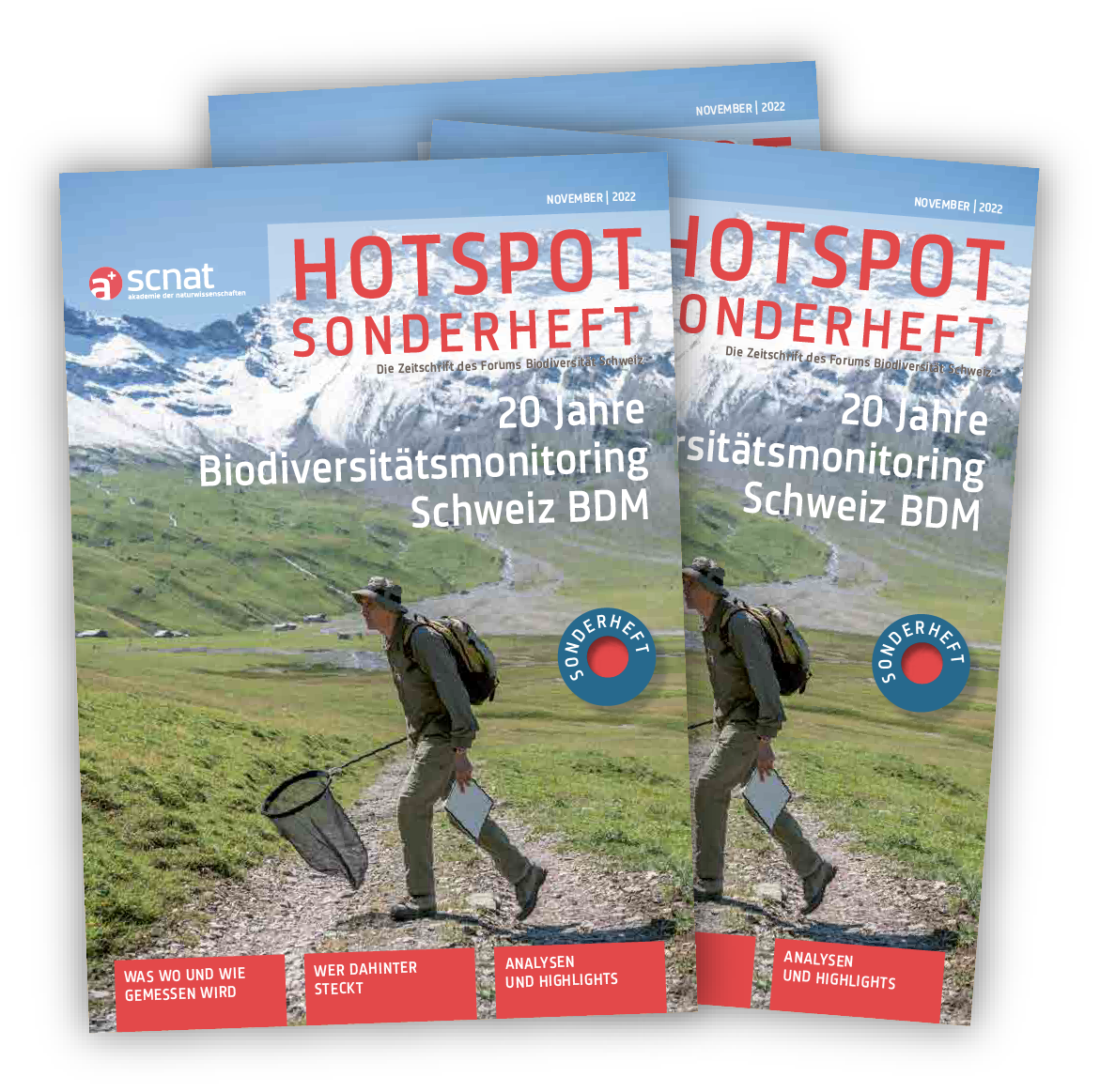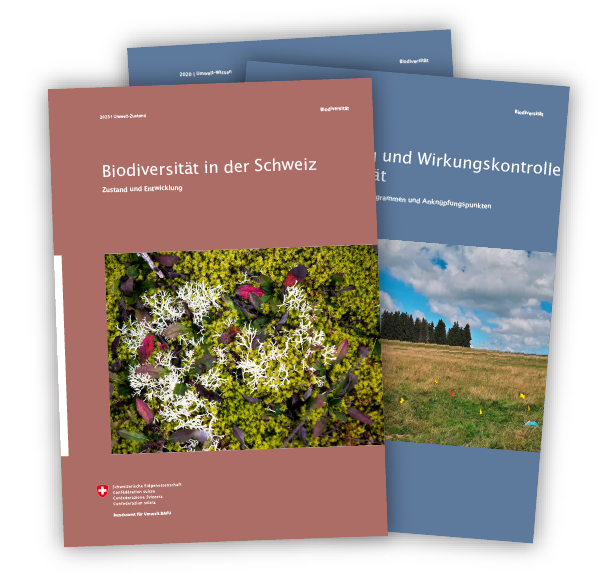List of scientific publications
Filter by Tag
Filter by Date
Forests are under pressure and going through rapid changes. However, current inventorying and monitoring (IM) programs are often either disjointed, too narrow in their scope and/or do not operate at…
Rising temperatures are leading to increased prevalence of warm-affinity species in ecosystems, known as thermophilisation. However, factors influencing variation in thermophilisation rates among taxa and ecosystems, particularly freshwater communities with…
We adopted a landscape-scale approach to analyze the genetic patterns (diversity, structure, and differentiation) of the Marbled White (Melanargia galathea). This butterfly species is characteristic of semi-dry grasslands, which have…
Reusser, J. E., Siegenthaler, M., Winkel, L. H. E., Wächter, D., Kretzschmar, R. & Meuli, R. G. (2023). Geochemischer Bodenatlas der Schweiz: Verteilung von 20 Elementen in den Oberböden. Agroscope…
2023
Thermophilisation of communities differs between land plant lineages, land use types and elevation
Bryophytes provide key ecosystem services at the global scale such as carbon storage and primary production in resource limited habitats, but compared to vascular plants knowledge on how these organisms…
Context The effects of landscape structure on biodiversity may change with the spatial and temporal scale at which landscape structure is measured. Identifying the spatial extent and temporal scale at…
Two commensal species of Chironomidae (Diptera, Nematocera) new for the Swiss fauna. − Hosts and habitat of the commensal chironomids Dratnalia potamophylaxi (Fittkau & Lellák, 1971) and Epoicocladius ephemerae (Kieffer,…
Daten zur zeitlichen Entwicklung der Vielfalt wirbelloser Kleinlebewesen in Fliessgewässern verschiedener Kantone werden den nationalen Datensätzen BDM und NAWA gegenübergestellt. Bis auf wenige Ausnahmen zeigt sich eine auf kantonaler und…
Background Local floristic diversity has massively decreased during the twentieth century in Central Europe even though in the 1990s diversity began increasing again in several regions. However, little is known…
2022
Different roles of concurring climate and regional land-use changes in past 40 years’ insect trends
Climate and land-use changes are main drivers of insect declines, but their combined effects have not yet been quantified over large spatiotemporal scales. We analysed changes in the distribution (mean…
Several studies have found that increased nitrogen (N) deposition leads to a decline in species richness in semi-natural grasslands, mainly due to the loss of species typical of nutrient-poor soils.…
While aquatic (blue) and terrestrial (green) food webs are parts of the same landscape, it remains unclear whether they respond similarly to shared environmental gradients. We use empirical community data…
Recently, a plethora of studies reporting insect declines has been published. Even though the common theme is decreasing insect richness, positive trends have also been documented. Here, we analysed nationwide,…
The population size of the Song Thrush has increased considerably in Switzerland since the mid2000s. At the same time, an increase in the abundance of landsnails was found in the…
Nitrogen (N) deposition from agriculture and combustion of fossil fuels is a major threat to plant diversity, but its effects on organisms at higher trophic levels are unclear. We investigated…
Mountain areas harbor large climatic and geographic gradients and form numerous habitats that promote high overall biodiversity. Compared to macroorganisms, knowledge about drivers of biodiversity and distribution of soil bacteria…
A wide knowledge base regarding the ecological preferences of benthic macroinvertebrates is synthesized in public databases. This knowledge can assist in disentangling the influence of multiple environmental factors on the…
Freshwater biodiversity loss is a major concern, and global warming is already playing a significant role in species extinctions. Our main goal was to predict climate change impacts on aquatic…
Information on soils' composition and physical, chemical and biological properties is paramount to elucidate agroecosystem functioning in space and over time. For this purpose, we developed a national Swiss soil…
Individuals of large or dark-colored ectothermic species often have a higher reproduction and activity than small or light-colored ones. However, investments into body size or darker colors should negatively affect…


